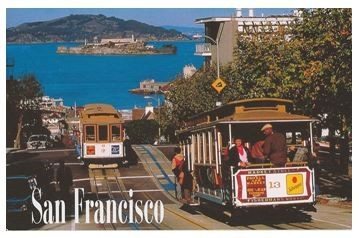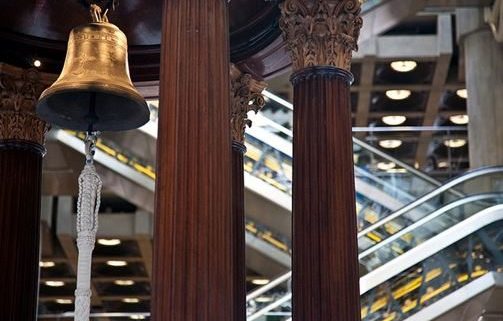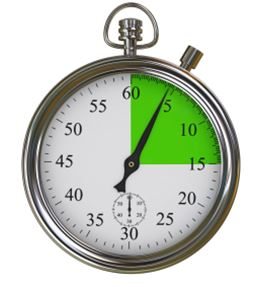While the Diary of a Mad Hedge Fund Trader focuses on investment over a one week to six-month time frame, Mad Day Trader, provided by Jim Parker, will exploit money-making opportunities over a brief ten minute to three day window. It is ideally suited for day traders, but can also be used by long-term investors to improve market timing for entry and exit points.
While the Diary of a Mad Hedge Fund Trader focuses on investment over a one week to six-month time frame, Mad Day Trader, provided by Jim Parker, will exploit money-making opportunities over a brief ten minute to three day window. It is ideally suited for day traders, but can also be used by long-term investors to improve market timing for entry and exit points.
Global Market Comments
September 30, 2013
Fiat Lux
Featured Trade:
(NOVEMBER 1 SAN FRANCISCO STRATEGY LUNCHEON),
(HAVE CALM WATERS RETURNED FOR SHIPPING STOCKS?),
($BDI), (DRYS), (SEA), (GNK),
(RIO), (BHP), (KOL), (FXA), (EWA)
Baltic Exchange Dry Index ($BDI)
DryShips, Inc. (DRYS)
Claymore/Delta Global Shipping (SEA)
Genco Shipping & Trading Ltd. (GNK)
Rio Tinto plc (RIO)
BHP Billiton Limited (BHP)
Market Vectors Coal ETF (KOL)
CurrencyShares Australian Dollar Trust (FXA)
iShares MSCI Australia Index (EWA)
Come join me for lunch at the Mad Hedge Fund Trader?s Global Strategy Update, which I will be conducting in San Francisco on Friday, November 1, 2013. An excellent meal will be followed by a wide-ranging discussion and an extended question and answer period.
I?ll be giving you my up to date view on stocks, bonds, currencies, commodities, precious metals, and real estate. And to keep you in suspense, I?ll be throwing a few surprises out there too. Tickets are available for $191.
I?ll be arriving at 11:00 and leaving late in case anyone wants to have a one on one discussion, or just sit around and chew the fat about the financial markets.
The lunch will be held at a private club in downtown San Francisco near Union Square that will be emailed with your purchase confirmation.
I look forward to meeting you, and thank you for supporting my research. To purchase tickets for the luncheons, please go to my online store.
Traders are stunned by the performance of the shipping stocks this month, which have been far and away a top market performer. The big questions they are now asking are ?Is it real?? and ?Is it sustainable??
This sector has been down for so long that most investors left it for dead a long time ago. All that was missing was the tolling of the Lutine Bell at the insurance exchange, Lloyds of London.
Lured by the heroin of artificially cheap financing during the naughts, the industry massively expanded capacity, believing that international trade would continue to grow at double digit rates forever. It didn?t.
Sound familiar? Think of it as ?subprime at sea.?
Then the 2008 financial crisis hit, and demand evaporated. International trade, the main driver of freight rates, collapsed. Freight rates dropped as much as 90%, and share prices even more. Readers delighted in sending me maps of laid up ships with forlorn crews in Singapore harbor, which at the worst, numbered in the hundreds. You could almost walk to neighboring Malaysia and not get your ankles wet.
For most industries, the economy bottomed shortly thereafter and began a long, slow recovery. Not so for shipping. China, the world?s largest buyer of bulk commodities, saw its economy peak in 2010, with annualized GDP growth halving since then from 13.5% to 7.5%.
This unleashed a second, even more vicious crisis for the shipping industry. With massive capital requirements, order times for new ships lasting three years, and hefty cancellation fees common, recovery delays are not what you want to hear about. Ships ordered at the peak of the financing bubble suddenly started showing up in large numbers. So, the industry remains with excess capacity of 20%, especially in the dry bulk, container, and crude oil tanker segments.
This was happening in the face of steadily rising fuel prices, thanks to events in Iran, Egypt, Libya, and Syria. The China slowdown also caused scrap metal rates to plummet, so downsizing shippers were paid less for junking their older, smaller, less fuel efficient ships. American energy independence, thanks to the ?fracking? boom, means fewer ships are needed to carry oil from a tempestuous Middle East.
It has been the perfect storm of perfect storms. All but seven of the 30 largest shipping companies bled money in 2012, lots of it. Cumulative industry losses amounted to a mind numbing $7 billion over the past four years. Companies continued to hemorrhage cash, and shareholders suffered.
And then a funny thing happened in August. The Chinese economic data slowly started to improve. Any price tied to business activity in the Middle Kingdom started marching upward in unison, including those for iron ore (BHP), (RIO), coal (KOL), the Australian dollar (FXA), and Chinese and Australian stocks (FXI), (EWA).
This improvement, no matter how uncertain it may be, was not lost on the shipping industry.? Capesize charter rates surged from $5,000 to $16,500, while Panamax rates are expected to fly from $8,000 to $9,500 by January. Shipping stocks, the most highly leveraged of asset classes, skyrocketed. This enabled the Baltic Dry Index ($BDI), a measure of the cost of chartering bulk carriers for coal, iron ore, wheat, and other dry commodities, to rise some 160% since July. Apparently, it is off to the races once again.
I am not normally a person who buys a stock after it has just doubled, unless Costco is running a special on Jack Daniels. But if a share has fallen 99%, a double takes it to down only 98%, leaving it still absurdly cheap. Shipping stocks fell so far, they were well below long dated option value. That means the market thought all of these guys were going under, which was never going to happen.
This is certainly the case with Dry Ships (DRYS), your poster boy for the Greek shipping industry. Adjusted for splits, the shares cratered from $120 to $1.50. It has just clawed its way up to $4.00, and then backed off to $3.67. The company?s fleet consists of 38 dry bulk carriers, 10 tankers, and has orders for another four ships.
It has completed a major refinancing that takes the firm out of the fire and puts it back into the frying pan. This should buy (DRYS) some time, while other competitors, like Genco Shipping and Trading (GNK) are expected to go under, removing unwanted overcapacity from the market. It also wisely diversified into offshore oil drilling right at the bottom of the market, picking up a 59% stake in Ocean Rig (ORIG) and its two semisubmersible rigs.
(DRYS) is not your typical ?widows and orphans? type investment. The web is chocked full of allegations of insider trading, nepotism and self-dealing by senior management. It is domiciled in the Marshall Islands, so don?t expect much transparency. Pass the smell test, it does not. After all, it is a Greek company.
If (DRYS) scares you and it should, there are safer ways to play the rebound. The Guggenheim Shipping ETF (SEA) offers a broad mix of industry exposure with lower volatility. It is up only 25% since April.
Even in the best-case scenario, shipping will never return to the heady growth rates of the naughts. China is highly unlikely to ever return to the breakneck growth rates of yore. The law of large numbers is kicking in with a vengeance.
It is modernizing its economic strategy, from a low value added commodity export led one, to a more domestically driven, services oriented approach. The bad news for shippers: The new model uses fewer bulk commodities, and therefore the ships to carry them.
However, if the China recovery is real, even a modest one, then the shipping industry offers one of the best multiple baggers that I can think of.
Just make sure you don?t get seasick from the volatility.
 The Lutine Bell
The Lutine Bell
While the Diary of a Mad Hedge Fund Trader focuses on investment over a one week to six-month time frame, Mad Day Trader, provided by Jim Parker, will exploit money-making opportunities over a brief ten minute to three day window. It is ideally suited for day traders, but can also be used by long-term investors to improve market timing for entry and exit points.
While the Diary of a Mad Hedge Fund Trader focuses on investment over a one week to six-month time frame, Mad Day Trader, provided by Jim Parker, will exploit money-making opportunities over a brief ten minute to three day window. It is ideally suited for day traders, but can also be used by long-term investors to improve market timing for entry and exit points.
Global Market Comments
September 27, 2013
Fiat Lux
Featured Trade:
(GOING BACK INTO JAPAN),
(DXJ), ($NIKK), (FXY), (YCS),
(BE CAREFUL, YOUR PC IS WATCHING)
WisdomTree Japan Hedged Equity (DXJ)
Nikkei Index ($NIKK)
CurrencyShares Japanese Yen Trust (FXY)
ProShares UltraShort Yen (YCS)
The smart people I know believe that prime minister Shinzo Abe?s plans to revive the Japanese economy will succeed, paving the way for a decade long bull market that will take the Nikkei Index ($NIKK) up to new highs. The dumb people I know argue vociferously and passionately that Abe will fail miserably, and that the economy and stocks will crash and burn as early as next year.
I think I?ll go with the smart people.
Last night, we learned that Japan?s Government Pension Investment Fund (GPIF) is going to carry out a massive reallocation out of domestic government bonds and into risk assets. The move not only sent Japanese shares flying, it has major implications for US and European markets as well.
The GPIF is the world?s largest pension investor, with a staggering $1.23 trillion in assets. It will boost its allocation to domestic shares from 11% to 12%, unleashing $12 billion in net stock buying. A far more impressive $37 billion has been earmarked for foreign stock markets. This will come at the expense of bonds, which will see their share cut back from 67% to 60%.
The move was triggered by the terrible performance of the Japanese government bond market this year, which has seen prices plunge and yields soar. Since the 2012 lows, the ten-year JGB yield has ratcheted up from an unbelievably low 0.39% to as high as 1.20%, a threefold increase. This dragged down the overall return on investment for the GPIF to the lowest levels in history. Since the demands by Japan?s retirees are expected to skyrocket from here, the fund had little choice but to move out substantially on the risk spectrum.
This is most likely only the opening salvo of the multiyear Great Rotation by the GPIF out of bonds and into stocks globally. The GPIF is not only attracted by the far higher dividend yields and capital gains offered by foreign stocks. A weakening Japanese yen will also juice profits when translated back to the home currency.
In the meantime, it is pedal to the metal for Mr. Shinzo Abe, whose late father, Shintaro, I knew well. He is betting the future of the country on a potent, and unprecedented, mix of fiscal stimulus, monetary easing and deregulation. The Bank of Japan has been leading the charge here, targeting a 2% inflation rate in two years, and promising to double the money supply. My own forecast is that this package will eventually take the Japanese yen down from today?s ?99 to ?150 to the dollar.
If you are an old fart like me you will recognize this approach. President Ronald Reagan employed a similar strategy to get the US economy off the mat in the wake of the 1974 and 1980 oil crisis and the stagflation that followed. This paved the way for a move in the Dow Average from 600 to 15,000. Nope, newbies, that is not typo. It really happened. If nothing else, the Japanese are great students of history, perhaps better than we are.
The other incentive to make a move on the (DXJ) here is that a further move down in the Japanese yen (FXY), (YCS) is imminent. It has been hovering just below ?100 for six months now, and is on the verge of launching into a new leg down. All that has been missing until now has been the trigger for the break. The GPIF move could be it.
I have written endlessly on the fundamental case for a weak yen for the past two years (for a link why you should sell short the yen, please click here http://madhedgefundradio.com/rumblings-in-tokyo-2/, ?and here http://madhedgefundradio.com/new-boj-governor-craters-yen/, and finally one more http://madhedgefundradio.com/new-boj-governor-crushes-the-yen/.
Legal Disclaimer
There is a very high degree of risk involved in trading. Past results are not indicative of future returns. MadHedgeFundTrader.com and all individuals affiliated with this site assume no responsibilities for your trading and investment results. The indicators, strategies, columns, articles and all other features are for educational purposes only and should not be construed as investment advice. Information for futures trading observations are obtained from sources believed to be reliable, but we do not warrant its completeness or accuracy, or warrant any results from the use of the information. Your use of the trading observations is entirely at your own risk and it is your sole responsibility to evaluate the accuracy, completeness and usefulness of the information. You must assess the risk of any trade with your broker and make your own independent decisions regarding any securities mentioned herein. Affiliates of MadHedgeFundTrader.com may have a position or effect transactions in the securities described herein (or options thereon) and/or otherwise employ trading strategies that may be consistent or inconsistent with the provided strategies.

















